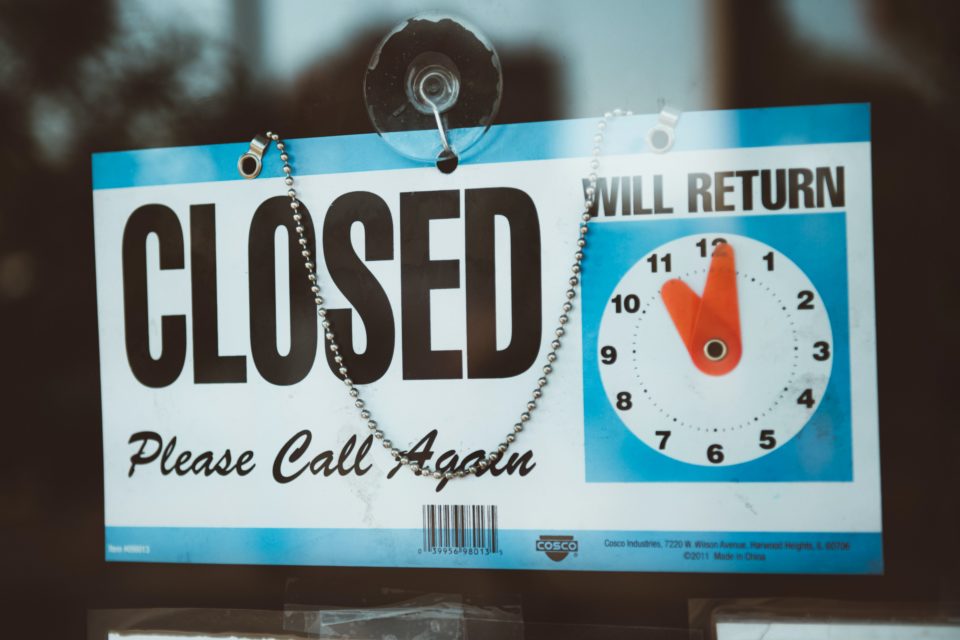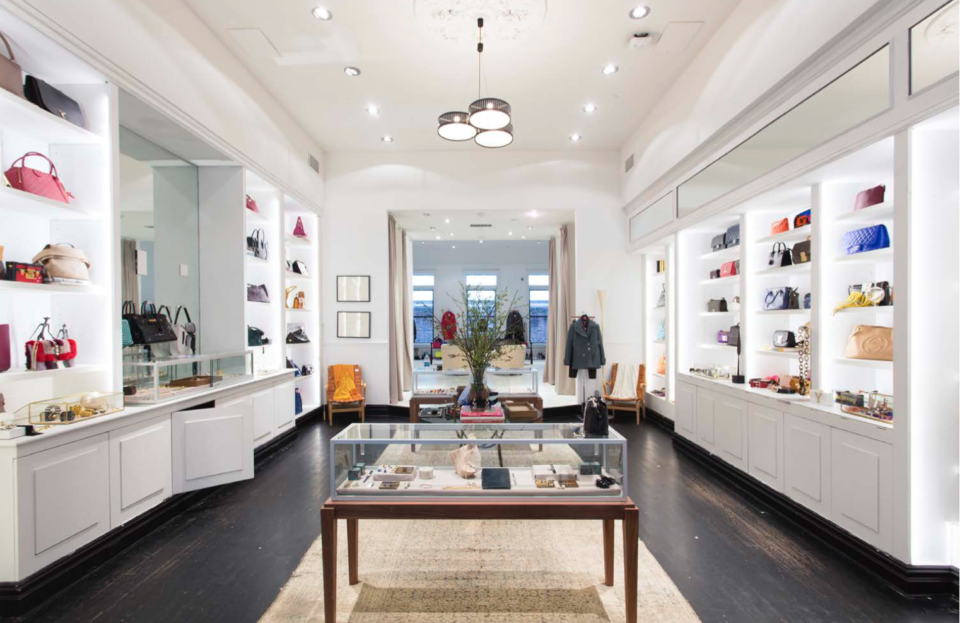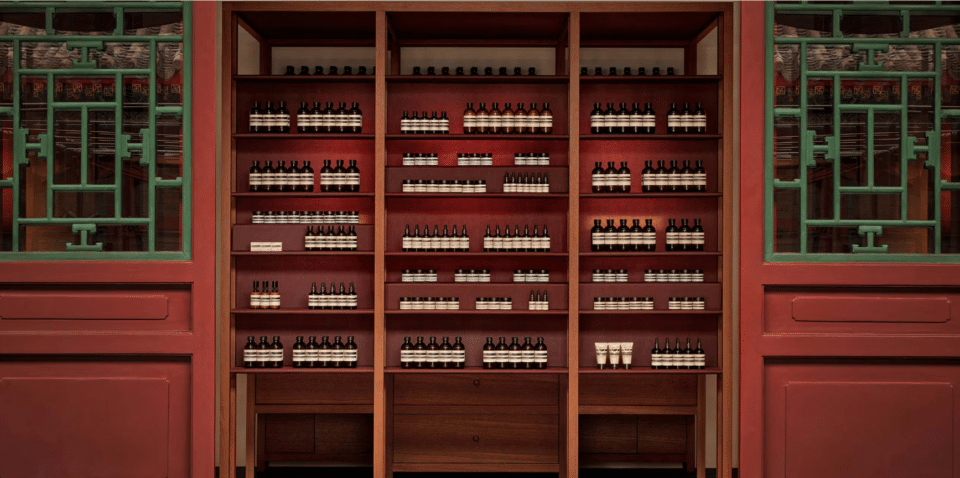17 Experts Predict Retail Design Trends for 2025
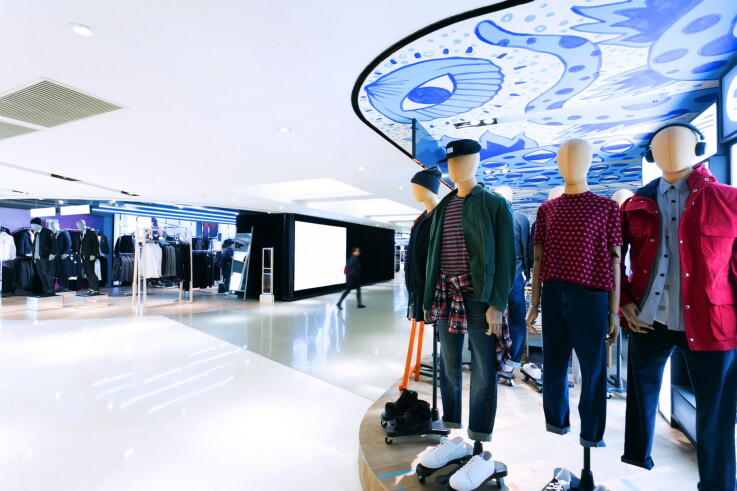
Want to know what the experts think about the future of retail design? What it might look like in a year? In five years? In 10 years? How the store will function, what retailers will be focusing on, what retail design trends you should be paying attention to?
We asked 17 leading retail design experts to share their predictions and thoughts on retail design in 2025.
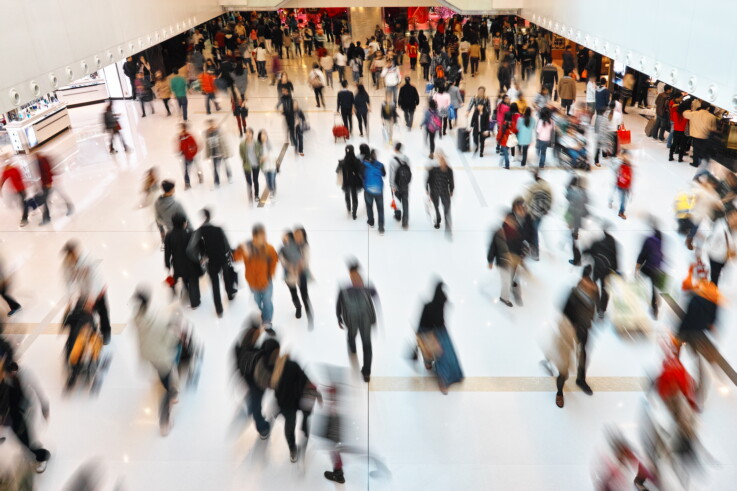
Focus on customer experience
Sam Langley Swain, Strategy Director, Green Room Design
“Retail in 2025 will be all about multi-sensory social sanctuaries. Digital will be able to give us convenience through rapid delivery and immersion through VR so retail spaces will be the place to go for physical, face to face interactions that either excite or relax.”
Russ Roberts, Client Services Director, Practical Minds
“Immersion and interactivity; personalisation and exclusivity. With digital sales rapidly starting to overtake those from bricks & mortar – brands will increasingly need to provide a credible reason to make a physical purchase. Digital will never replace a great in-store retail experience, but it will greatly influence customers’ perceptions of what a great experience is.”
Jeremy Bergstein, President, The Science Project
“The key focus for retail design in 2025 will be what it was in 1800s. We will continually be trying to sell more to customers by satisfying their emotional needs. Customers’ needs will change and tactics and technologies by which we solve them will dramatically evolve. Brand and businesses will need to understand the dynamic and evolving customer journey so that they can use the correct tactics, messaging and mediums to speak with customers in the appropriate ways and times to drive conversion.”
Lucy McLaren, Senior Strategist, Household Design
“As the retail landscape continues to shift from transactionally-focused to engaging and experiential spaces, by 2025 we expect retail to be more immersive, disruptive, and personalised.
1. Immersive
Retailers will focus less on transacting with customers by merely selling their products to them and instead will be focusing on creating winning brand spaces that customers can be immersed into and share on.
2. Disruptive
By 2025 the ease of ordering on the go / from the comfort of one’s home will have improved and retailers will need to evolve the in-store experience to make the retailer the brand of choice with frictionless transactions. We also expect more portable, flexible formats to arise so a brand can connect with customers wherever they are at.
3. Personalised
Using the big data gained through the online trends and transactions will also be a focus point of retail design in 2025. Stores will increasingly become smarter, anticipating and adapting environments to each customer’s needs by utilising data and AI. All of these factors will allow retailers to ‘personalise’ environments/spaces and make their offer more relevant and timely.”
Maaike van Rooden, Consultant/Partner, SVT Branding + Design Group BV
“I believe that the future of retail is smart retail, in its double meaning – retail should be smart, as in clever (1), and smart, as in good looking (2).
1) With the use of technology and data, stores can be optimized continuously towards customer-centric experiences and design. Physical retail can learn from e-commerce in this field, where heat maps, A/B tests and continuous improvement are the standard. Online retail uses client data to value the results of tests and innovations, while in bricks the results of experiments and trial and error are mostly measured by only revenues. However, there are more elements that define the success of innovations. Store heat maps, for example, offer a solution to measure the impact of changes in detail: the flow in the customer journey, the hotspots and blindspots in stores.
To me, the physical bookshops of Amazon Books are a great example of clever retail, a leading example for other retailers: the collection is purely based on client data – insights gained from Amazon.com, so the assortment is based on what customers are looking for, client reviews are part of the in-store communication. And people are helped to find what they are looking for by highlighting e.g. ’top 10 travel books’, ‘books to read once in a lifetime’, ‘best kids books’ etcetera. Clever retail creates a solid foundation for every retailer.
2) On top of that stores must create great experiences, and look extremely good: to attract people, to surprise people and to engage them – every time. Now and in the future there won’t be place anymore for mediocre retail designs. There is so much choice and consumers have endless possibilities, therefore retailers have to understand that they have to win and earn customers’ attention in their busy lives. Attractive store designs and experiences count for large retailers/retail chains but also for the small retailers. For the last group I believe that personality, a local touch, authenticity are the key elements to win customers: a true and unique story from the retailer and around the products and services.
Online and offline will merge to one experience in customer perspective, since the decision to go shop online or offline is blurring; it won’t be a conscious decision anymore to go to clicks or bricks. The customer will just do what is most convenient at a certain time. He or she will choose what, where and when matches the desire/need best. Therefore all retail should become smarter to offer the best customer centricity.”
Olivier Reig, Owner, The Retail Office
“For me the key focus will be to continue to build the “flying carpets” or the “bridges” if you want, between the product, the website platform which describes but also enables the customisation and sale of the product, and the customer who travels between all these places. It’s in tension between online and real life fields, flat and 3 or 4D (screens or spaces), that designers will continue to create paths from the customers to the products or from the products to the customers.
The need is more to show the aura, stories/attitudes possible, and all the possibilities/personalities and options offered by the product and also the way it is conceived and made and what are the values behind the product & its impact on the environment, etc.
People will first enter an “experience”, then the product will be presented but very simply, as all the details will be accessible instantly on the web (phablet/phones, tablets, glasses, VR masks or even in the clothes on us…) and you will be able to create your own version of the new product every time thanks to these tools.
The presence of all the products will be less compulsory. Only one representative example or a model could be at the centre of the room and it will move and take the “skin” of the exact product you will imagine in real time.”
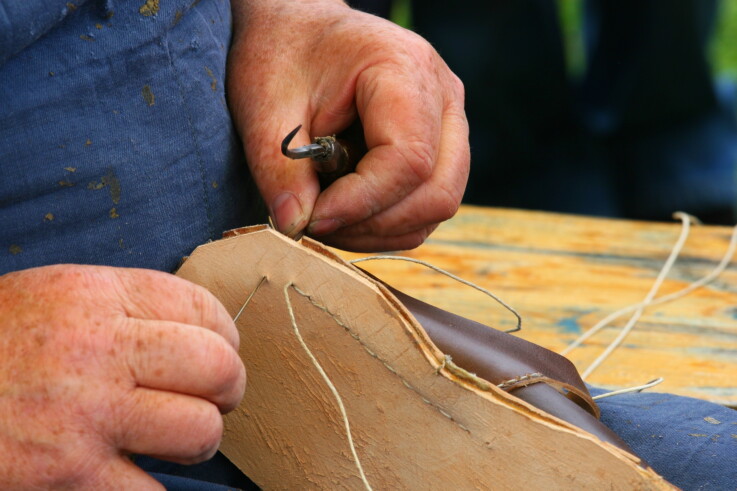
Personalisation will be the norm
Simon Millington, Managing Director, Millington Associates
“Brands will tailor their retail design to you personally, so the offer will be interchangeable, its fast becoming key to teach you about the product and how you specifically will interact with that product as opposed to the generic features of it. Retail design goes hand in hand with that. Social Media moments are key now so will be even more important in 10 years as the way you can interact online will become even more integrated into personal life. This means retail design has to be very brand led and specific to create moments that are immediately identifiable and attributed to brand.
The future of retail design – look at Apple.”
Ollie Patterson, Marketing Manager, Mynt Design
“We believe retail in 2025 will see even more of a focus on product customisation & personalisation in terms of customer experience.We’ve seen glimpses of retailers and brands making the customer experience at retail more personal with the aid of intelligent technology such as beacons, to greet customers and recommend certain products, promotions, etc.
However, in the most part, the experience isn’t totally seamless yet, as the technology relies on consumers to have an app on their phone & Bluetooth on (there are too many obstacles to make this run smoothly) and it will probably take a little longer for customers to fully embrace this way of shopping, and also for retailers to implement even more intelligent (and easier) ways of making shopping experiences truly personal.
Brands like Adidas and Nike do a great job of giving the consumer control of their own product designs, especially online. Although there is an element of in-store customisation in certain stores, we believe by 2025 there will be a far greater level of product personalisation available in-store. This could link to collaborations, limited editions runs, etc. all of which generate hype and give customers a reason to return to stores.
We don’t think every store will be super futuristic and technical by 2025. Firstly, it won’t suit every brand, and secondly not every customer wants to ‘step into the future’ when they walk into a store. The key now and in the future is about keeping things relevant and to a degree, simple. It’s important that a store experience is a relevant and true reflection of the brand’s values whilst also catering to the ambitions & needs of their customers.”
Steven Titchener, Creative Director, Two Guys
“I think the future of retail design will be personalisation. With technology progressing so fast and giving us access to more data, retailers will be able to craft experiences for each individual customer. Things like recommendations and personalised offers will be commonplace through the use of interactive boards, there may not even be a need for shops as we know it. Imagine walking into your favourite clothes shop, you stand in front of an interactive monitor that measures you, shows what clothes look like on you and gives you recommendations – all that’s left is to order.”
Mike Roberts, Chief Creative Officer, Green Room Design
“Retail in 2025 will be tailored to the need of the individual in a way that provides services and experiences based on personal preferences. Tailoring to personal preferences will be intuitive and product recommendations, display and showcasing will have an affinity with the desires of the customer.
The ability to share purchasing decisions with like-minded peer groups will be super important for customers to get the validation that they require and to maintain that social buzz that shopping provides.
Technology will provide the ultimate enabler and rather than being celebrated will become an expected, discreet integrated component of the shopping experience.”
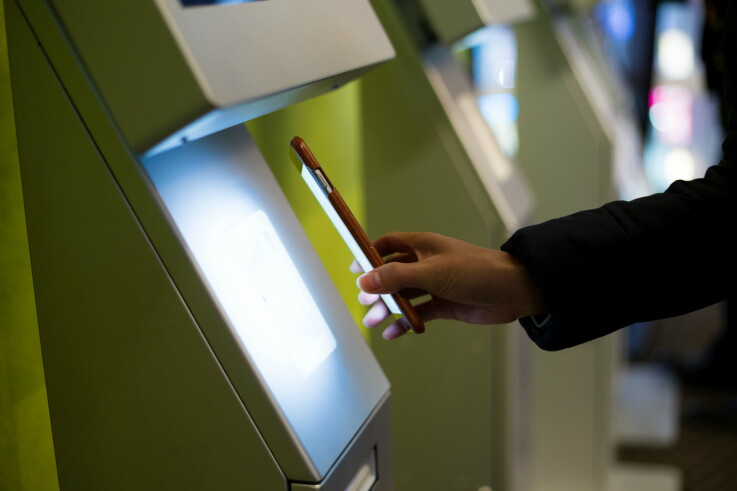
Digitally driven design
Rich Ford, Director of New Business, Sherlock Studio
“Digital will be the norm, not the exception. We’re currently in a transitional phase in terms of how digital integrates with physical retailing. By 2025, we would expect the integration of digital and physical to be far more seamless and intuitive across forward-thinking retailers’ store estates and web assets. Shops will increasingly make use of digital technology in their design – but that doesn’t mean just plastering walls with huge invasive digital screens. It means using smart digital technology to tell the shopper something they didn’t already know.
We would expect retailers in some sectors to change a proportion of their stores into showrooms – stocking a few key items for consumers to try on or try out before purchasing online. This strategy will allow them to cut property costs but still maintain a physical connection with customers. We’d also expect more online retailers to establish a limited physical presence, whether that’s through a flagship showroom or through periodically hosting pop-ups.
Retail spaces will become more informal – both in terms of the decor, the in-store comms and the customer service, whilst offering little incentives such as free coffee will become the norm. With traditional boundaries between, for example, physical & digital and home & office becoming blurred, hierarchy and formality within retailing will fall away.”
Hugo Espinosa, Owner, ATOM Creative
“What is happening now, this start up phenomenon in the millennial generation is creating so many different small business models in this globalised world of global brands. If we follow this path I expect to see less shopping malls, and see again the corner shop and street districts where you can find this new local-global trendy goods and shops in unexpected places, but very convenient for the shopper. The store does not have to be physical at all. In 2025 I think we will combine digital with face-to-face interaction in almost any place, so you can find the store or brand you want in the street corner of your neighbourhood or favourite mountain road.”
Alan Taylor, Head of Retail Design, B&Q
“I feel the next big thing in retail design is the massive potential of AR (augmented reality), but by then it’ll have moved on so considerably that I’m not so sure we’d have passed that phase and moved back to pencils and actually talking to people face to face.
Over the last 24 months we have been using VR to drive both customer and business engagement in the development of our formats which has proved incredibly insightful and drives real questions in regards to the shape, design and engagement of the stores prior to breaking ground on site.
The ability to do this in an AR environment should allow us to move into real spaces and drive this engagement even further. I’m incredibly excited when I see the development of Microsoft’s Hololens capability and can’t wait to get my hands on it!”

More meaningful retail
Michael Sheridan, Chairman and Founder, Sheridan & Co
“It will be fuelled by a much deeper understanding of consumers, through phygital perhaps. A third space somewhere where you are not just individually recognised, but your preferences are considered in terms of what you may or may not want to see or be introduced to in a real state space.
Retail will be made up of living spaces. We are already seeing the rise of ‘branded micro homes’, with in-context retail spaces offering active products. Retail spaces will be places we can live, eat, sleep and work. The lines between consumer and retail will become more blurred.
Interestingly I think we will move towards considering what is to be ‘human’. Technology will have progressed so much further by 2025, and we will become more reliant on technology. Humanised experiences will be a luxury, something that can be celebrated in store. Sonos and Samsung have both launched recently in NY good examples of creating a space that is ‘experience led’ as opposed to being ’sales led’. Retail might even become ‘anti-transaction’, but rather ‘pro-experience’.”
Stuart Wood, Founding Partner, Missouri Creative
“Despite the on-going hype around new technologies promising to revolutionise all aspects of our lives, we believe shoppers will always want to touch, taste, see and feel products and that bricks-and-mortar stores will continue to be one of the most visceral ways for brands to engage with their customers in the future.
However, as e-tailers strive to match the benefits offered by physical stores (replicating the ‘must-have’ moment with services like one hour delivery), branded retail environments will look to ‘leisure-ise’ shopping and evolve into spaces where brands immerse their audience in a curated and increasingly personalised experience that drives serendipitous shopping behaviour – nudging visitors into ‘discovery mode’.
Physical stores may not always be the conversion point but will still play a key role in creating emotional motivation. Ever had to endure a one hour conversation with a call centre employee whilst trying to return unwanted goods or have an informed dialogue with a bot? Compare this to the tactile experience of the best stores and the added value of brilliant empathetic staff.
Yet, as mobile devices and wearable technology become increasingly important and omni-present in everyday human behaviour (from health and wellbeing to peer-to-peer endorsements) the physical products in-store will take on a more significant role in triggering purchase. As smart packaging becomes the norm we will see that the medium will carry the message; creating a direct and personalised dialogue.
But the fundamental need to congregate, assimilate, trade and share will still be what defines us as humans – from our earliest ancestors to the people shopping in the brand cathedrals of 2025.”
Lucy Feagins, Editor, The Design Files
“I think more and more we’ll be tightening up on sustainability, efficiency and product/ material life cycle (i.e. where do the products and materials we use go when their functional life is over?). In 2025 we’ll be obsessed with waste – minimising the footprint we leave in all our working and living environments. This will impact the choice of materials and also the versatility of the spaces we design and inhabit – retail spaces will need to be functional for more than one purpose.
In general, there will be more people and less space! Retail spaces will be smaller – every square inch of space will be used to its full potential – you’ll be able to buy homewares from a hole-in-the-wall style kiosk, and shop for groceries using an interactive screen at tramstops and train stations, with groceries delivered and waiting for you when you get home!
Leon David, Retail Director, Cheil Worldwide
Flexible
Shoppers will demand massive changes in a shorter period of time. However, that does not means that the brand has to succumb to that demands. The retail strategic designer would be forced to develop new ways to give long lasting and meaningful experiences.
Instant
Patience is over. Loyalty was dead some time ago. If the expectation is not promptly covered, the shopper will change to the most appealing offer. The competition would be fiercer. The mimics will be perfected. That’s why the brand and the retailer has to be aligned to the shopper. At the same moment at the same time.
Customised
As social living organisms, we drive ourselves with tribal associations. As much as we want to be individuals, it will prevail the endless need to belong to someone or somewhere. The technology advantages will give brands a fastest and cheaper way to personalise the products and the experiences around the shopper.
Everywhere
That’s a reality right now. But it will be in a more solid and mature way. Not only physical and digital and massive media. Not only by segmented parts or offers or platforms. But as a continuous story line, in which the shopper will not see the differences, because all will be perfectly blended.
Sharing
The sales transaction do not means the end of the relationship. The brand and their products wild Judged permanently. Any flaw, any detail can ignite a massive conversation around. For better or worse, the brand will be at the shopper’s hand.
Meaningful
This is an unchanged milestone. If the shopper does not identify themselves with the offer, the product, the experience, the brand in a deeper way, the chance to be just an ethereal sale will be a reality and the shopper decision change will be given anytime soon.
The empathetic position will be careful constructed in order to be aligned to their lifestyles, feelings, needs, but must of all, around their moral principles.”
That’s what the experts think, but what about you? Share your thoughts in the comments.
For more insights on retail design check out why retail needs to design out the bad to focus on the good and how to use retail design to improve the customer experience.

